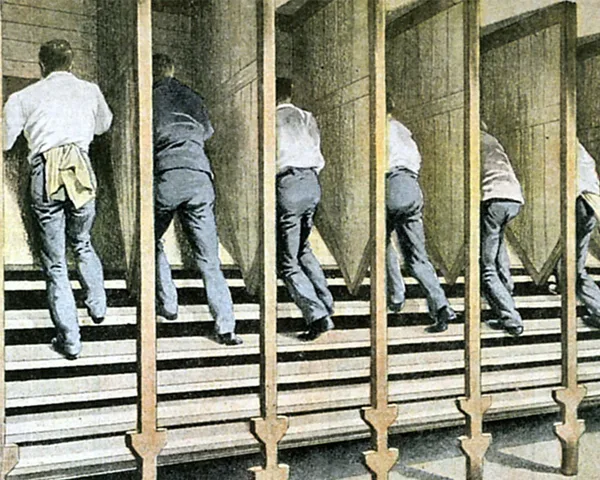The London Marathon – a history of carbs, prison, Greek battles and Royal convenience.
At 26.2 miles, the London Marathon offers runners plenty of thinking time – so here’s a little something to ponder as you pound the pavements.
Consider the treadmill. You may have chosen to spend at least some training time on a treadmill…a useful indoor device for a rainy day and, nowadays, pleasantly equipped with screens and music to distract from the pain. Strange to think, therefore, how the treadwheel of Roman times became the inspiration for the first treadmill, designed by engineer Sir William Cubitt in 1817 after witnessing the apparent idleness of prisoners.
Typically, prisoners would walk on the treadmill for about six hours daily, climbing up to 14,000 vertical feet and easily burning more than 2000 calories. (www.hfe.co.uk/blog/history-of-the-treadmill/). It was meant to cause the incarcerated to suffer and learn from their sweat and could busy as many as 24 prisoners, standing side-by-side along the wheel. Most treadmills soon included partitions so convicts could not socialize, with one fatality a week. It was finally banned as cruel and inhumane by 1900. (https://daily.jstor.org/treadmills-were-meant-to-be-atonement-machines/)
Awful though this contraption for punishment was, it did also have a more positive, useful side as the prisoners’ efforts on the treadmill connected to a mill for grinding corn and oats – and every self-respecting marathon runner knows that a bowl of porridge oats is a staple ingredient for long run slow-release energy!

In the days leading up to a marathon, you want to carb load and you want those carbs to be digested and in your bloodstream at the time of the race. In fact, Deena Kastor (once American female marathon runner record holder) would wake up at 4am on race mornings to eat a bowl of oatmeal and then go back to sleep (www.marathonhandbook.com/what-to-eat-before-a-marathon/).
And you really are going to want every drop of energy you can get for that distance!
The idea for the modern marathon was inspired by the legend of an ancient Greek messenger who raced from the site of Marathon to Athens, a distance of about 40 kilometers, or nearly 25 miles, with the news of an important Greek victory over an invading army of Persians in 490 B.C. After making his announcement, the exhausted messenger collapsed and died. To commemorate his dramatic run, the distance of the 1896 Olympic marathon was set at 40 kilometres. (https://www.history.com/news/why-is-a-marathon-26-2-miles).
Nice to commemorate the poor messenger’s fatal commitment to delivering his message – but today’s marathon runner needs even more miles in the tank, thanks to the spectator preferences of the British Royal family.
In the 1908 London Olympics, the marathon started at Windsor Castle and finished in the White City stadium, measuring 26 miles. But the royal family wanted the runners to finish directly in front of their viewing box, which added on 385 yards. For years, the marathon distance varied from 24 to 26.2 miles, but in 1921… 26.2 became official (www.runnersworld.com/advanced/a25471238/why-the-heck-is-a-marathon-exactly-262/).
Enjoy your epic run this 23rd April – fuelled by oats, trained on an optional treadmill, and with no threat of enemy invasion behind you – and be royally proud of crossing that finish line.
Join our very own Lauren Heasman in her efforts to raise money and awareness for mental health charity by supporting her London Marathon run at https://www.justgiving.com/fundraising/lauren-heasman11. With every step, she will be fuelled by the same slow-release energy found in porridge oats, a staple ingredient for long-distance runners, and inspired by the history of the marathon, from ancient Greek battles to the royal convenience that gave us the official distance of 26.2 miles. Your support can make a real difference in helping to break the stigma surrounding mental health and supporting those who need it most.

